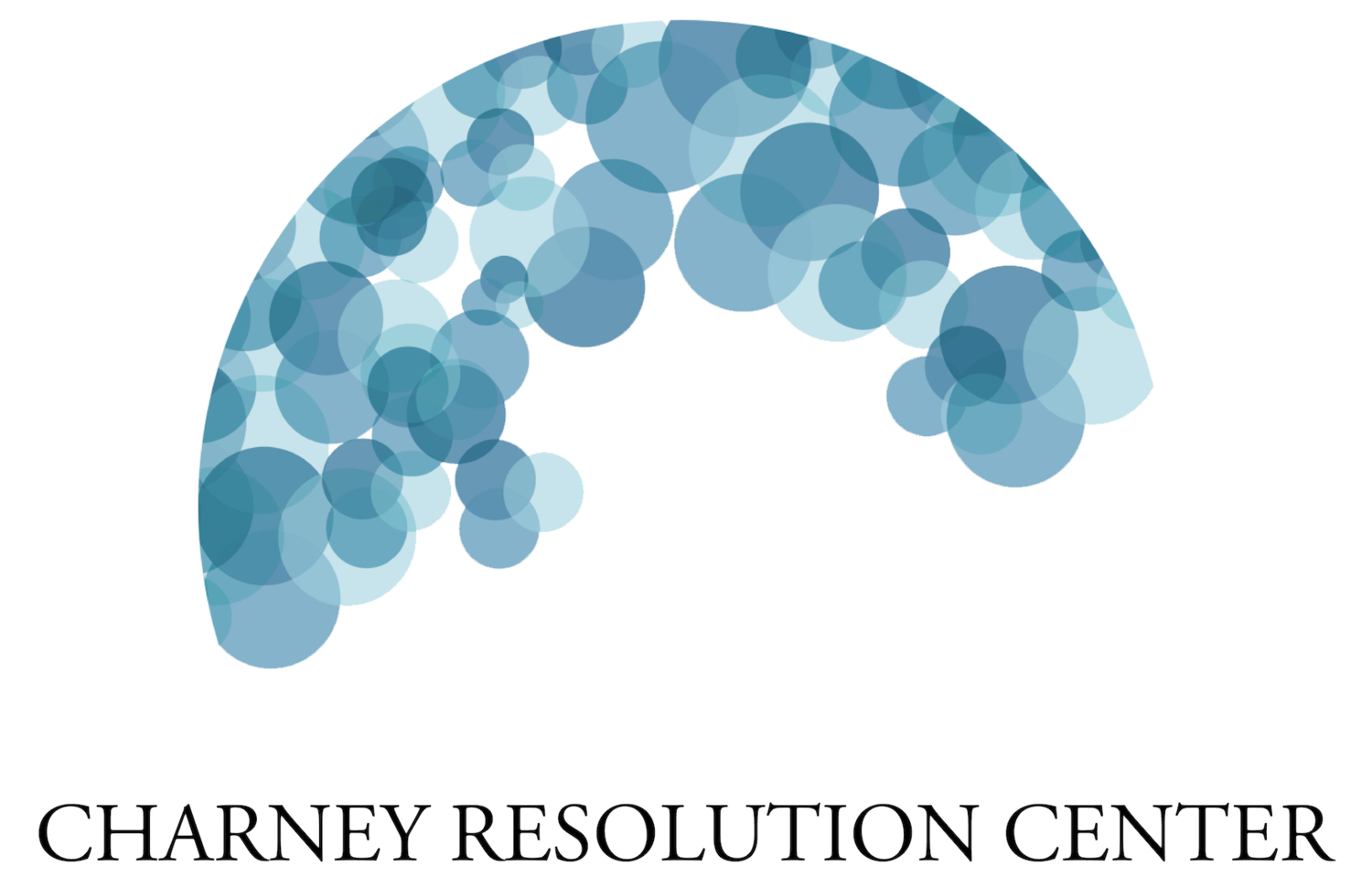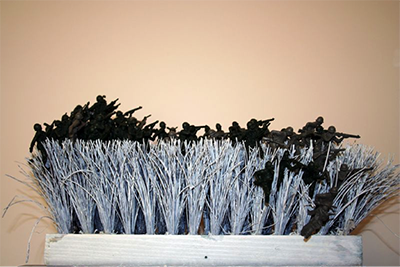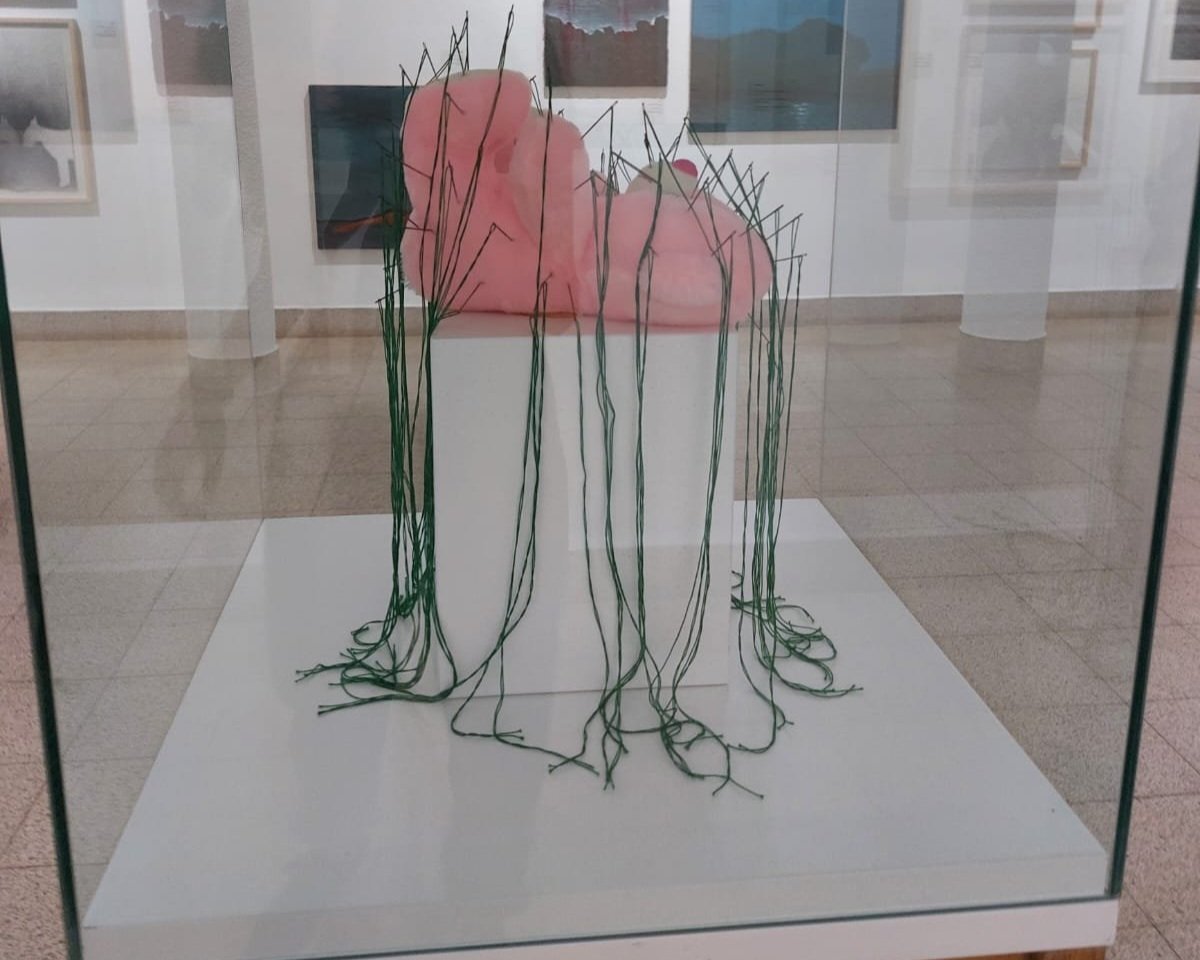On Tuesday, November 15th, the students of EMIS’ art department went on a trip to the art gallery of Umm al-Fahm and the Ein Harod Museum.
The gallery of Umm al-Fahm was established by the artist Said Abu-Shakra. The Abu-Shakra family fled their home village of Lajjun during the Israeli Independence War in 1948 and then settled in the Arab-Israeli city of Umm al-Fahm.
The family consists of 5 artists: The eldest brother, god bless his memory, Walid, the first Palestinian artist. Said and Farid, the founders of the Umm al-Fahm gallery. Their late cousin Asim (who inspired the founding of the gallery in the first place), and his nephew Karim, the youngest artist in the family for now.
We started the day at the Umm al-Fahm gallery, where we were greeted with some Arabic coffee, tea, and baked goods, and then moved onto a women’s pottery workshop where we could see how the women of Umm al-Fahm are integrated into the art world. We even got the chance to paint some patterns ourselves and get some first-hand experience. After this workshop, Said took us to the memorial exhibit room for his brother Walid where Said explained the special technique his brother used. He would carve his art on copper and use it as a template to print many pictures. It is a very difficult technique and Walid is the only one in
Aliza Olmert, Futility
the country to master it. Said then gave us a tour of some of the exhibitions in the gallery, made by both Israeli and Palestinian artists. Among them, were Israeli artists Neomi Zach and Eliza Olmert. And Aliza Olmert, the latter of which donated her anti-war piece “Futility” to the Charney Center.
The most impactful piece to us was the installation “Glass” (2014) by Micha Ullman. The piece shows a pile of dirt that has a hole in the middle of it. The hole is filled by a single glass. The piece represents the abyss that exists between Israelis and Palestinians and the fact that we should meet in the middle “over a cup of coffee”. Said told the students that he had a significant contribution to this piece since he gave the artist the soil to use. The artist wanted to use soil that was the color of coffee from Umm al-Fahm. Said couldn’t find such soil in Umm al-Fahm but found some in the ruins of the village his family is originally from and said this soil carried the hard story of his family. The students were very touched by Said’s story. Nadeen, a student from Ramallah, said: “I could really relate to it, the meaning, also just when he told the story - I could really relate to it”.
Following our visit to the Umm al-Fahm gallery, we went to the Ein Harod Mishkan Museum of Art which houses a retrospective exhibit by the 5 members of the Abu-Shakra family and curated by Galia Bar Or and Housni Alkhateeb Shehada.
Students mentioned that the exhibitions were all very personal, but the styles were different. An art piece that resonated with Abby is one by Farid Abu-Shakra that shows a pink teddy bear stubbed by lots of needles carrying a green string. She says “I think the teddy bear is like the child and the needles are pain, probably”.
Overall, the students had a very meaningful experience in both galleries and made some great observations, both in the artistic aspect and the political aspect. Those who did not know much about the conflict got to hear many narratives and learn about it, and those who were more knowledgeable about it got to see more perspectives. While accompanying the trip I also got to learn a lot and have some interesting discussions with the students, teachers, and hosts. The students are truly looking forward to visiting Said’s gallery again soon.
Farid Abu-Shakra’s painting dedicated to the memory of his cousin Asim, now at the Charney Resolution Center)




